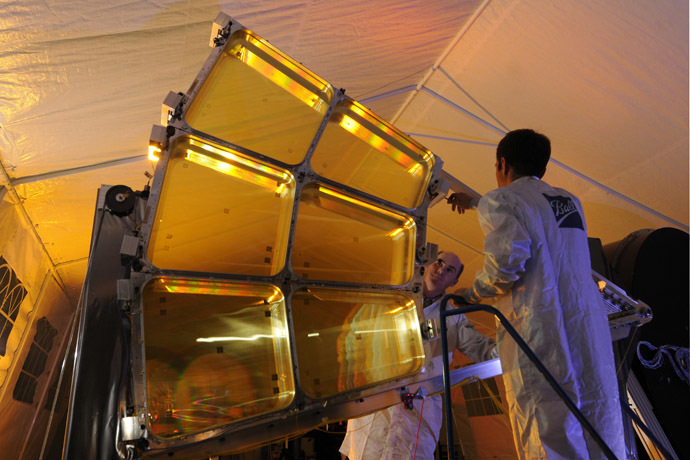From its position 35,000 kilometers above the Earth, MOIRE will be able to view approximately 40 percent of the planet’s surface. The satellite will transmit what it sees in high resolution and in real time.
“It would be optimal to have real-time images and video of any place on earth at any time—a capability that doesn’t currently exist,” writes DARPA on its website. Currently the MOIRE is in the second phase of its development and a ground-based prototype has been successfully tested.
Up until this point, the logistics of transporting such an enormous satellite into space made such a feat impossible. However, MOIRE’s 18 octagonal mirrors are made of a plastic membrane about as thick as cling film instead of heavy glass lenses. As well as being significantly lighter, the new material is also more flexible and can be folded and as a result takes up less space at launch.
“Membrane optics could enable us to fit much larger, higher-resolution telescopes in smaller and lighter packages,” said Lt. Col. Larry Gunn, Darpa program manager, in a statement. “In that respect, we’re ‘breaking the glass ceiling’ that traditional materials impose on optics design.”
Moreover, the membranes are easier to protect than their glass predecessors and are able to survive more wear and tear. Instead of reflecting light like mirrors, the membranes diffract light with specially placed obstacles etched into their surfaces. The membrane focuses the light onto a sensor which then transforms it into an image.
Although DARPA has not released any information on how much it costs to produce the membranes, the new design has the potential to drastically lower the costs of putting a satellite in orbit.


